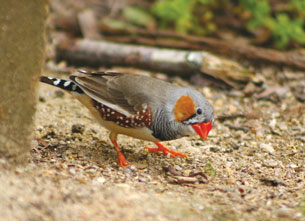Module 4 Intro
1. Module 4 Intro
1.7. Lab
Module 4—Mechanisms of Population Change
 Lab: Finch Beak Depth
Lab: Finch Beak Depth

© Greg Atkinson/shutterstock
Environmental factors, adaptation, variation, and mutation all play a role in the struggle for survival among individuals in a population. Charles Darwin based his theories of natural selection primarily on his observations of finches in the Galapagos Islands. In this lab you will determine the effect of environmental conditions on finch beak depth.
Problem
How does the depth of finch beaks vary with periods of drought or heavy rain?
Procedure
Step 1: You will be using a simulation to explore the answer to this lab problem. Open the Finch Beak Lab simulation.
Step 2: Open and follow the steps in the Exploration Guide.
Step 3: Record your data in a table similar to the one below.
Step 4: Answer the Analysis and Conclusion questions in your Lesson 1 Assignment. Save your responses in your course folder.
Data and Observations
Beak Depth and Finch Population Sizes for Varying Average Inches of Rainfall
Average Inches of Rainfall |
Average Depth of Beak |
Average Population of Finches |
1 |
|
|
5 |
|
|
10 |
|
|
Analysis
- During what part of the year does the finch population increase? Why do you think this is so?
- How did the number of finches change after the five years of drought? Why do you think this is so?
- What happens to the average beak depth after the five-year drought?
- During years of drought, the smaller, softer seeds are quickly eaten up, leaving behind only the larger, tougher seeds that are harder to crack and more difficult to find under the baked soil. What kinds of beaks are more useful in these conditions? Why? How does this information relate to your answer to question 3?
- Assuming that beak depth is a genetic trait, and that an individual finch cannot change the shape of its own beak, how did the change in average beak depth actually occur during the drought? Explain in detail.
- When rainfall is above average in the Galapagos Islands, a higher proportion of seeds are small. How does this explain the trend in beak size you observed after five years of excess rain?
Conclusion
- How did the finch population size and beak depth respond to drought years? What about in years of heavy rainfall?
- What selection pressure caused the change in beak depth? Explain.